#2: Mustafa Hussien, Managing Director, Royal Line Holidays
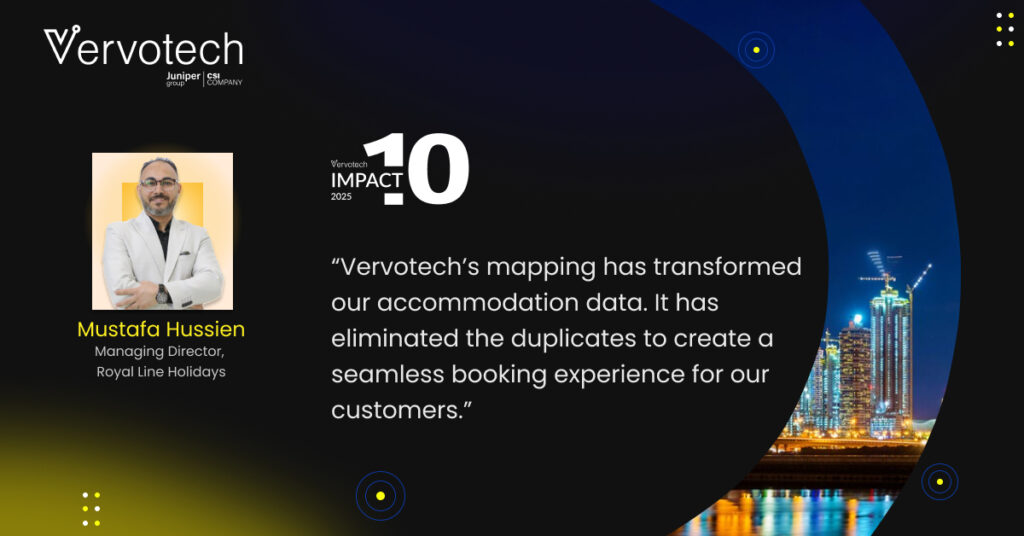
In the second episode of our Impact10 series, we interacted with Mustafa Hussein, a travel-tech enthusiast and Managing Director of Royal Line Holidays. With over a decade of experience in the travel and tourism industry, Mustafa shares valuable insights on how digital innovation is reshaping travel experiences. In this interaction with Vervotech, Mustafa talks about how Royal Line Holidays has interacted with Vervotech’s offerings and the net impact it has created for them over the years during their time with Vervotech. From adopting travel technologies to staying resilient in a post-pandemic world, this episode dives into the evolving landscape of travel and the mindset it takes to lead with impact. Here are some insights from our interaction with Mustafa: How long have you been in the travel ecosystem and how do you think it has evolved over the years? I’ve been in the travel industry since 2008. I started my journey with World Avenue which is a B2B hotel wholesaler. I was previously with their office in Switzerland and then all over the world. What were the challenges you were facing on your online travel platform? Earlier, we majorly faced the problem with inaccurate hotel locations. For example, if there’s was a hotel in Switzerland, but it fell on the border between France & Switzerland, the hotel descriptions often showed that the hotel was in France. It made it harder for our customers to find what they were looking for and undermined the smooth experience we aim to offer. We needed a way to bring order and consistency to our hotel inventory. This issue with inaccurate location often misled the travelers. But now, with Vervotech’s mapping technology we do not face such issues. What led you to choose Vervotech’s mapping solution? We were impressed with Vervotech’s real impact on businesses like ours. What I liked the most was the access to the granular dashboard where I can see all the details like the integration progress with supplier’s inventory, the percentage of the mapping process of each supplier the number of mapped properties, etc. Previously, we didn’t have this option, so instead of sending reminders, we kept sending emails to our mapping providers to know when it was going to be done. Vervotech also stood out because of how intelligently its mapping APIs work. It doesn’t just clean up the data, it understands it. The platform pulls from hundreds of suppliers and standardizes everything, which immediately made sense for our global inventory. Plus, their reputation in the industry gave us the confidence to move forward. How was your experience with the implementation process? Honestly, I was expecting a few hiccups, as is typical with any integration but the entire process was surprisingly smooth. The Vervotech team was always available, very communicative, and proactive. They understood our system and worked closely with our tech team to make sure everything was up and running quickly and efficiently. What key improvements have you seen since using Vervotech? Vervotech’s mapping has transformed our accommodation data. It has eliminated the duplicates to create a seamless booking experience for our customers. Now, everything is more organized, accurate, and easier for customers to navigate. Internally, our operations team is spending less time troubleshooting data issues, which is a big win. Is there any feature or aspect of the product that you find particularly valuable? The daily content updates are a game-changer. In the travel business, things change all the time availability, amenities, even property branding. Having access to updated, reliable content every single day gives us a big edge in terms of delivering current and trustworthy information to our customers. How has your experience been with Vervotech’s customer support team? Vervotech’s team is really, really, really supportive and good. They are highly responsive and available around the clock. You can tell they genuinely care about their clients. They’ve been quick to respond, solution-oriented, and incredibly helpful whenever we’ve needed them, even post-implementation. It feels more like a partnership than just another vendor relationship. Plus, they’re always ready to assist with any inquiry. If you were to describe Vervotech’s impact in one sentence, what would it be? Vervotech has helped us turn a complex, messy backend into a seamless experience for our customers. Would you recommend Vervotech to others in your industry? Why? Without hesitation. If you’re serious about offering a reliable and modern travel booking experience, this kind of data infrastructure is essential. Vervotech delivers on what they promise, and their team is exceptional to work with.
How Within Earth Holidays Reduced Hotel Data Mapping Time by 40% with Vervotech’s Mapping API

Our client, Within Earth Holidays, is one of the leading accommodation suppliers. Within Earth specializes in offering curated tourism experiences across the Far East, Middle East, Turkey, and Europe. The company is renowned for its extensive inventory, global coverage, and commitment to delivering exceptional service to its travel partners. Enter your email to read the case study! Challenges our client faced: Inconsistent room descriptions across multiple suppliers Time‑intensive manual reconciliation of hotel data Stale or outdated hotel inventory Heavy reliance on IT for routine data updates Value delivered by Vervotech Automated, API‑driven mapping Continuous data monitoring Standardized, high‑quality hotel content Dedicated 24*7 free customer support Download this case study to find out: How standardized hotel data boosted booking conversions How real‑time API integration automated their content-update workflow How automated mapping freed up resources for strategic growth How a proactive customer‑success partnership accelerated time to value Vervotech’s Room Mapping tool helped us strengthen our brand image, we are able to churn out all the duplicate listings from our portal. Also, we witnessed significant improvement in conversions and customer satisfaction. Hasan Director, Tripjack
What is ‘Location Mapping’ in Hotel Mapping?
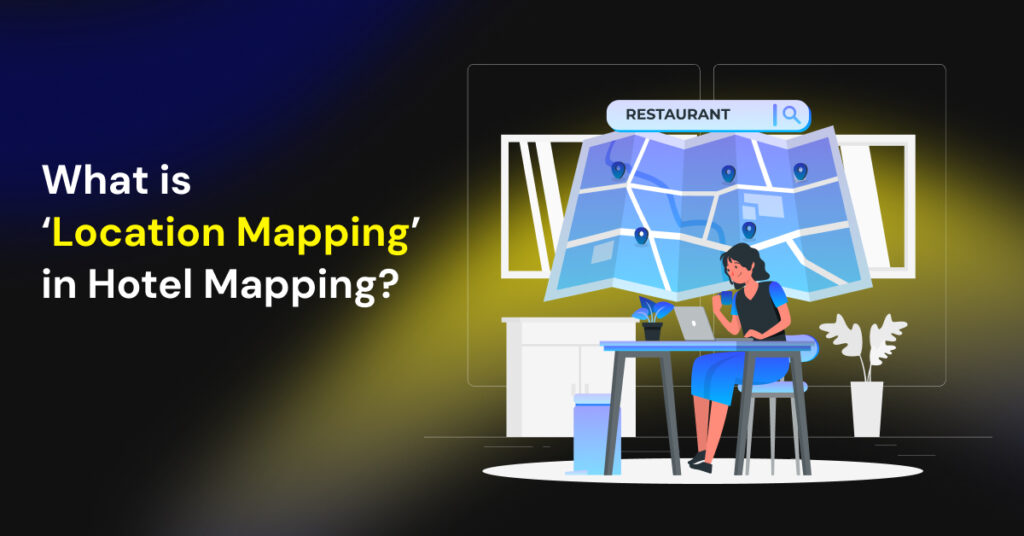
Imagine a traveler searches for a hotel “in Rome” and ends up booking one that’s technically within city limits but an hour away from the Colosseum. While the booking may be valid, the experience isn’t ideal, because the traveler wanted a hotel that was close to the Colosseum but ended up booking one which is quite far from it. This is why accurate hotel data matters the most and that’s what ‘location mapping’ helps with. In this blog, we’ll breakdown what “location mapping” means in hotel content, explore the gaps in traditional location data, why it matters to online travel platforms and booking engines, and how evolving data sources like OpenStreetMap (OSM) are helping reshape location accuracy in travel. To understand the value of location mapping, it’s important to first break down what it actually entails in the context of hotel data. Let’s dive in! So, What Exactly Does Location Mapping Mean in Hotel Mapping? Let’s go back to the scenario we talked about in the beginning- the traveler wanted to book a hotel in Rome, but particularly one that was closer to the Colosseum. But, due to inaccurate hotel details, he ended up booking the one that was an hour away from the Colosseum. Enter location mapping- a process that associates a hotel with its exact physical location not just by city or region name, but by precise geographic coordinates, nearby landmarks, and contextual boundaries. With the right geolocation and related attributes, location mapping ensures a hotel doesn’t just appear “somewhere in the city” but in the exact spot it’s located, with meaningful context around it. Modern location mapping goes beyond simple addresses or city names. It includes: Geocoding: Assigning exact latitude and longitude coordinates to each hotel. Boundary validation: Ensuring hotels fall within accurate city, district, or neighborhood limits. Contextual mapping: Associating hotels with nearby airports, transport terminals, and tourist attractions. POI proximity analysis: Understanding how close a hotel is to key points of interest (POIs) and using that data in search filters or recommendations. In the absence of accurate location mapping, a hotel might be tagged under a general location like “New York City,” even if it’s far from popular areas like Times Square or Central Park. This gap can lead to irrelevant search results, frustrated users, and lower conversions. Now that we know what location mapping is, let’s explore why it’s more than just a technical feature and how it directly impacts the quality of hotel search and booking experiences. Why Must Online Hotel Booking Platforms Ensure Accurate Location Mapping? For travelers, location is one of the top factors influencing booking decisions. Whether someone wants to stay near a business district, a beach, a train station, or a popular attraction, vague or incorrect location data can cause frustration and ultimately lead to abandoned bookings. Here’s why accurate location mapping is so important: Precision in Search = Better Conversions When hotels are shown in truly relevant locations, travelers are more likely to find what they’re looking for- landmarks, neighborhoods, or transportation hubs and book it. Hotels Near Attractions = Smoother User Experience When travelers know a hotel’s proximity to key points of interest (POIs), it helps them make informed decisions and creates an intuitive, map-first booking flow that they love. Reduced booking errors Accurate location data helps avoid situations where users unintentionally book hotels far from their intended destination. Enhanced map-based discovery As map-based search becomes more common, precise geolocation is essential to power features like “hotels near me” or “within 2km of downtown.” High Booking Confidence Accurate location details reduce booking anxiety and increase satisfaction, leading to higher return rates. As traveler expectations evolve and map-based search becomes mainstream, location mapping is also advancing. Here’s a look at how the role of location data is expanding in modern travel platforms. Looking Ahead: The Growing Role of Context-Aware Hotel Search Modern travelers expect more than just availability and price, they want smart recommendations that consider their purpose of visit, desired experience, and proximity to attractions or transit. As travel platforms evolve to serve more personalized, map-driven user experiences, accurate and dynamic location mapping is non-negotiable. From powering “nearby” filters to enabling hyper-local travel recommendations, location-aware hotel data is at the heart of smarter travel planning. To support more intelligent location mapping, many platforms are now turning to open, community-driven mapping systems like OpenStreetMap (OSM). These platforms offer rich geospatial data that can help define not just where something is, but what’s around it and how it connects to the broader geography. For example, using POI data from OSM, a travel platform could identify hotels within walking distance of the Eiffel Tower or within 5 km of an airport making hotel search more intuitive and contextual. Beyond OSM, location mapping can also be powered by government datasets, proprietary mapping systems, or hybrid approaches that combine multiple sources. In summary, accurate location mapping is an important capability shaping the future of personalized, location-aware hotel discovery. Take Away Location mapping isn’t just a technical detail- it’s a foundational part of the hotel booking experience. It is up to the hotel booking platforms to correctly map hotels to their real-world locations and nearby points of interest, to create more relevant, reliable, and user-friendly search experiences. As mapping data continues to improve with platforms like OSM and other geospatial tools, the travel industry is well-positioned to offer travelers not just a place to stay- but the right place to stay.
Biyaheko.PH, Philippine’s Leading Travel Solutions Provider Chooses Vervotech for Improved Hotel Data Accuracy

Biyaheko.PH, Southeast Asia’s leading B2B travel solutions provider, has announced a strategic leap forward in its commitment to empowering travel agents by partnering with Vervotech, the leading accommodation mapping solutions provider. Renowned for its comprehensive platform integrating flights, ferries, buses, hotels, tours, and more, Biyaheko has consistently strived to deliver a seamless, efficient, and effective experience for its accredited partners. They offer a single-window solution with a best-price guarantee and dedicated 24/7 customer support, which has earned them the tag of the most trusted partner for travel professionals, enabling them to maximize their time, resources, and ultimately, their success in the dynamic travel industry. With Vervotech’s AI native mapping technology integrated into their platform, Biyaheko will further solidify its position as the go-to platform for travel agents seeking perfectly mapped hotel inventories. This integration will further allow Biyaheko to eliminate the challenges of duplicate listings and inconsistent hotel data, leading to a streamlined booking process and improved operational efficiency for their travel partners. Ultimately, this will translate into enhanced customer satisfaction and increased booking confidence. “At Biyaheko, our priority is to equip our travel agent partners with the best possible tools to succeed. Vervotech’s mapping solutions have a reputation for delivering an unprecedented level of accuracy and efficiency in hotel listings, and this was one of the major reasons for integrating their mapping APIs into our platform”, said Ajay Kesavan, CEO of Biyaheko, PH. Vijendra Singh, Commercial Director at Vervotech, said, “We’ve known team Biyaheko and Ajay for over 5 years and have been a witness to all the hard work and effort they have been putting into building Biyaheko and turning it into a leading travel solutions player. Working with them always felt relatable and aligned; safe to say, ‘we fit like pieces of a puzzle’. Through this partnership, we’re excited to share Biyaheko’s vision of adopting innovative travel technologies to deliver precise, reliable travel products to their customer base and enhance their user experience. About Biyaheko Biyaheko.PH is the Philippines’ leading B2B online travel and tours solutions provider, offering a comprehensive platform for accredited travel agents. Integrating a wide range of travel products, including flights, ferries, buses, worldwide hotels, tours, and more, Biyaheko provides an easy-to-use, efficient, and effective platform that empowers travel professionals to streamline their operations and achieve business growth.
Revenue Management for OTAs: Balancing Profitability with Rebooking
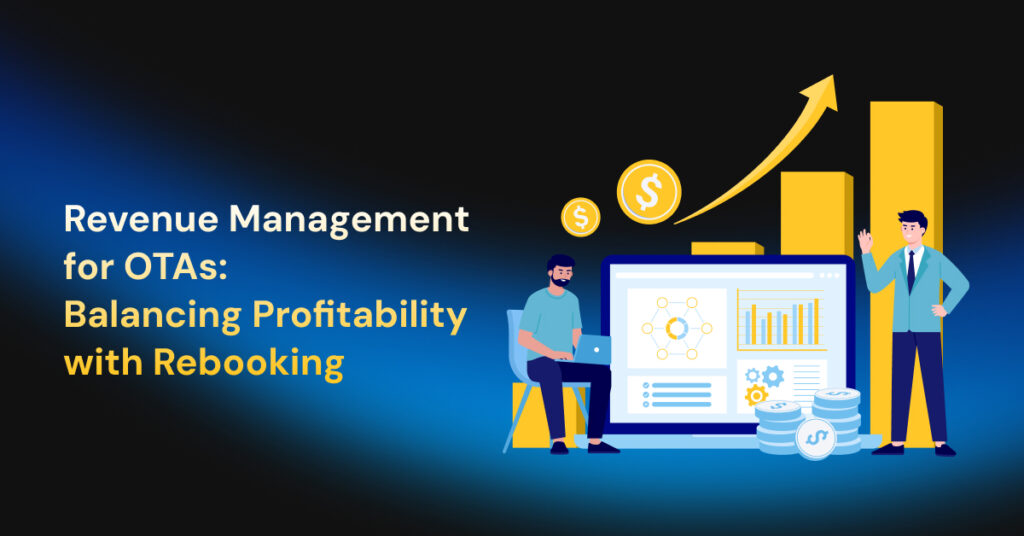
For online travel agencies (OTAs) and online travel businesses (OTBs), revenue management has evolved far beyond playing price games and maximizing commission on bookings. Most travel businesses know and acknowledge that the key level of profitability is ‘rebooking’ hotel rooms- an instance where the traveler sees no change, but the OTA/OTB secures a higher margin. In this blog, we discuss how OTAs can use revenue management strategies including automated rebooking to improve margins, streamline operations, and create long-term growth. We’ll break down what revenue management looks like in the B2B travel business, how profit optimization works through rebooking, and the tools that make it all possible. What is Revenue Management in the OTA Context? Revenue management is the strategic use of data, automation, and decision-making frameworks to optimize profitability per transaction. In the context of OTA, it refers to managing large volumes of hotel inventory sourced from multiple suppliers and wholesalers, while maximizing the margin on each booking. OTAs operate in a complex ecosystem of supplier contracts, commissions, negotiated rates, and dynamic availability and that is why revenue management, typically involves: Choosing the right supplier source for each booking Continuously monitoring pricing across suppliers Automating rebooking to capitalize on price drops Mapping equivalent room types and cancellation policies Enhancing internal margins without affecting the end customer experience To effectively manage this complexity, OTAs must adopt technologies and frameworks that help them adapt quickly to shifting prices, supplier availability, and booking volumes. Now that we’ve unpacked the basics of revenue management in the OTA landscape, let’s explore why rebooking is a key strategy for maximizing profitability. The Importance of Rebooking for Profitability Once a booking is confirmed, the opportunity to improve margins doesn’t end! Rebooking when used strategically allows OTAs to act on new, more favorable inventory opportunities that may arise after the initial reservation is made. In the hotel distribution market, rebooking is a tactical method to maximize margins without changing the traveler’s booking. Once a hotel reservation is made via Supplier A, the system keeps checking for the same room across other connected suppliers. If Supplier B offers the same inventory at a lower rate or better terms, the original booking is canceled and replaced with the new one- provided the switch adheres to cancellation and refund policies. This backend strategy allows OTAs to: Increase profit margins per booking Offer more competitive pricing to travel agencies or partners Maintain healthy supplier relationships through optimal sourcing Reduce dependency on any single supplier A McKinsey report on travel distribution noted that optimizing supply chain flexibility including supplier-switching mechanisms could improve net margins by 10-15% for large-scale OTAs. With that in mind, let’s take a closer look at how the process of rebooking works within a modern OTA platform. Understanding its importance is one thing but how exactly does rebooking function within the OTA ecosystem? Let’s break down the mechanics behind it. How Rebooking Works in an Online Hotel Booking Ecosystem Here’s a simplified flow of how internal rebooking supports profit maximization: Step 1: Initial Booking Your booking engine makes a booking after checking rates and availability with your suppliers and the platform confirms the booking via Supplier A based on real-time availability and pricing. Step 2: Continuous Monitoring Your system continues to monitor room availability and prices for the same hotel from other suppliers (e.g., B, C, D) after the booking is confirmed. Step 3: Identifying a Better Deal Supplier B shows the same or a comparable room at a lower price or with more favorable terms (e.g., flexible cancellation). Step 4: Automated or Manual Rebooking If switching the supplier meets predefined business rules (e.g., profit thresholds, cancellation windows), the platform cancels the original reservation and rebooks with Supplier B. Outcome: The traveler’s reservation remains unchanged. But the OTA increases profit on that transaction without any customer-facing change or even uses the margin advantage to offer competitive pricing. Understanding the mechanics of rebooking is essential, but what truly drives success is a broader strategy supported by advanced systems and data-driven decision-making. With a clearer picture of how rebooking operates, it’s time to dive into the practical side: what revenue management strategies can OTAs use to strike the perfect balance between rebooking and profitability? Let’s go through the key revenue management strategies that support this model. 5 Key Revenue Management Strategies for OTAs 1. Dynamic Supplier Sourcing- Rather than relying on a single supplier, successful OTAs aggregate hotel inventory from multiple wholesalers and partners. This diversified sourcing allows better price comparisons, improved availability, and reduced risk of dependency. 2. Automated Rebooking Engines- Automated systems can track existing bookings, scan alternate suppliers for price drops, and execute rebooking in milliseconds. This ensures that OTAs capture every possible opportunity to improve margin before check-in. 3. Room Mapping and Deduplication- A major challenge in rebooking is identifying whether the same room exists across suppliers, given varied naming conventions and inconsistent metadata. Room mapping technology standardizes inventory across sources to ensure accuracy in rebooking decisions. 4. Smart Cancellation Policy Matching- Before rebooking, platforms must verify that the new supplier’s cancellation terms match or exceed the original- protecting both margin and customer trust. 5. Workflow Automation- Revenue management isn’t scalable without automation. Smart workflows govern when rebookings are triggered, under what margin thresholds, how suppliers are ranked, and what fallback actions to take. With these strategies in place, OTAs can develop a reliable, repeatable approach to increasing profits per booking. Of course, none of this would be possible without the right supporting technologies. Let’s look at the tools and technologies that empower OTAs to put these revenue management tactics into action efficiently. Tools & Tech That Enable Smart Revenue Management Modern B2B travel businesses rely on a sophisticated tech stack to operationalize revenue management: Profit Maximization Tools: A profit maximization tool empowers OTAs to increase their backend profitability through advanced price optimization and automated rebooking. The system continuously scans supplier inventories for better prices, maps equivalent rooms, validates cancellation terms, and executes rebookings all
Nailing Customer Experience with a Hotel Booking API: 10 Best Strategies for Success

Overview: For online travel businesses, delivering a seamless customer experience isn’t just a nice-to-have; it’s a must. Travelers today expect speed, accuracy, and convenience at every click. A well-designed hotel booking API can work wonders, acting as the backbone of an exceptional booking journey. Here, we explore ten practical and proven best practices that ensure your hotel booking API meets and exceeds customer expectations. From implementing hotel mapping solutions to optimizing response times, these strategies will set you up for success in creating a delightful booking experience. Download the Infographic here: (no email required) Download Now
5 Dynamic Pricing Strategies for OTAs & OTBs That Contribute to Maximized Profits
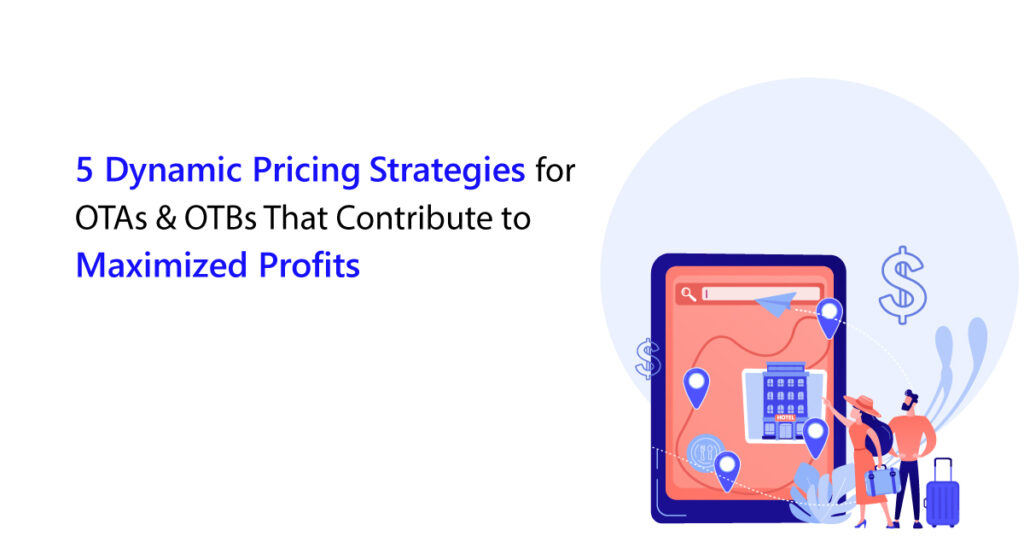
Hotel pricing is no longer static – it’s strategic! Hotel rates change by the minute, customer demand fluctuates with the season (and even the hour), and competitor pricing is always just a click away. For OTAs and OTBs, this price volatility presents both a challenge and an opportunity. The challenge: staying profitable while offering attractive prices. The opportunity: using dynamic pricing strategies to maximize margins and stay ahead of the curve. But while many businesses stop optimizing once a booking is made, smart booking platforms go a step further- with post-booking price optimization. Profit Maximization Tools empower OTAs and TMCs to capture extra profit by rebooking confirmed hotel reservations at lower rates when available. Let’s dive into what dynamic pricing means in travel, why it matters for online travel businesses, and the five most impactful strategies to boost profitability. What is Dynamic Pricing in the Travel Industry? Dynamic pricing is a strategy where the price of a travel product- such as a hotel room, flight, or vacation package- is continuously adjusted based on real-time market conditions. These adjustments are driven by factors like demand and supply fluctuations, competitor pricing changes, seasonality and event calendars, customer behavior and purchase intent, etc. In simpler terms, dynamic pricing ensures that travel inventory is sold at the best possible price at any given moment- helping both the business and the traveler win. Hotels, airlines, and cruise lines have been doing it for years. Now, OTAs and OTBs are leveraging the same logic (and technology) to manage their own margins more effectively. Curious to know why? Quickly hop on the next section. Why is it Important to Implement Dynamic Pricing Strategies for Online Travel Businesses? Static pricing is no match for a dynamic market. With travelers becoming increasingly savvy and comparison tools making pricing transparent, OTAs need to do more than offer listings- they need to offer optimized value in real-time. Moreover, dynamic pricing enables businesses to capitalize on price surges during peak demand and secure deals when prices dip. When prices are tailored to user behavior or market conditions, customers are more likely to complete bookings. This responsiveness can drastically improve booking velocity and cart conversion rates. Your competitors are already doing it. Without dynamic pricing, you risk being outpriced, overlooked, or losing loyal customers to smarter platforms. With continuous price monitoring, you can sell more rooms before expiration and reduce unsold inventory, especially for time-sensitive deals. With the right tools, dynamic pricing gives you access to insights that inform your overall sales strategy- making pricing less of a guesswork and more of a science. While you may understand the importance of implementing dynamic pricing strategies, it is more important to determine the right strategies that will help maximize profitability without harming your existing workflows. 5 Dynamic Pricing Strategies for Profit Maximization Let’s now explore five battle-tested dynamic pricing strategies that OTAs and OTBs can implement to boost profits: 1. Real-Time Market-Based Pricing Prices should never be set in isolation. Make sure to align your pricing with real-time market trends, so you can adjust rates based on competitor pricing, the demand in a specific location, local events & holidays, and other factors like inflation, or currency fluctuations. For this, you can use AI-powered tools that continuously scan the market for rate changes and adjust your listings accordingly. Pro Tip: Leverage aggregated hotel data to stay one step ahead of market shifts. 2. Competitor-Based Pricing Keeping an eye on your competitors is crucial. If a rival OTA is offering the same hotel room at a lower price, you risk losing bookings. Competitor-based pricing lets you benchmark against pricing trends of direct competitors, promotions or last-minute discounts, loyalty-based pricing from big players, etc. You can use smart competitive intelligence platforms that help you track and respond to pricing gaps in real-time. Pro Tip: Don’t just match prices- offer more value (e.g., free cancellation or added perks). 3. Segmented Customer Pricing Every traveler is different. This is why you can increase conversions without necessarily lowering prices by segmenting your customers and personalizing prices, you can segment types include first-time vs. returning users, location-based pricing (geo-pricing), device-based pricing (mobile vs. desktop), loyalty tier pricing. For this, you can use user behavior tracking and CRM integrations to tailor pricing offers. Pro Tip: Offer exclusive rates to returning customers or email subscribers to boost loyalty. 4. Time-Based Pricing Optimization Time is money- literally! Travelers booking closer to their stay date often pay more, while early birds look for discounts. This is why you should constantly analyze hotel booking windows, so you can increase prices for last-minute hotel bookings, offer early-bird discounts to secure volume, and dynamically adjust pricing based on time left to travel. Try using booking window analytics to trigger automated pricing rules. Pro Tip: Create urgency with “limited time offers” that respond to booking behavior. 5. Post-Booking Price Optimization (Rebooking Strategy) Here’s the most underrated strategy: Profit maximization after the booking is made. Hotel prices fluctuate even after a reservation is confirmed. With a post-booking price optimization tool, you can automatically track price drops for the same room and rebook at a lower rate- without affecting the customer experience. Profit maximization tools monitor confirmed bookings and identify opportunities to rebook at lower prices. This helps you retain the price charged to the customer but pocket the difference as added profit. Bottom Line: This is pure profit recovery with zero disruption to the traveler and a powerful way to boost margins on a scale. Also read: How Rebooking Helps Increase Online Travel Business’ Profit Margins Take Away Dynamic pricing isn’t just a smart tactic- it’s a survival strategy in today’s fast-moving travel industry. From market-based and competitor-aware pricing to segmented offers and rebooking strategies, each method plays a role in maximizing your profitability. With a combination of the strategies mentioned in this article- and especially tapping into post-booking optimization through tools, OTAs and OTBs can unlock new revenue streams. Get accurate hotel & room data with our
How Profit Maximization Works and Why Travel Businesses Should Care
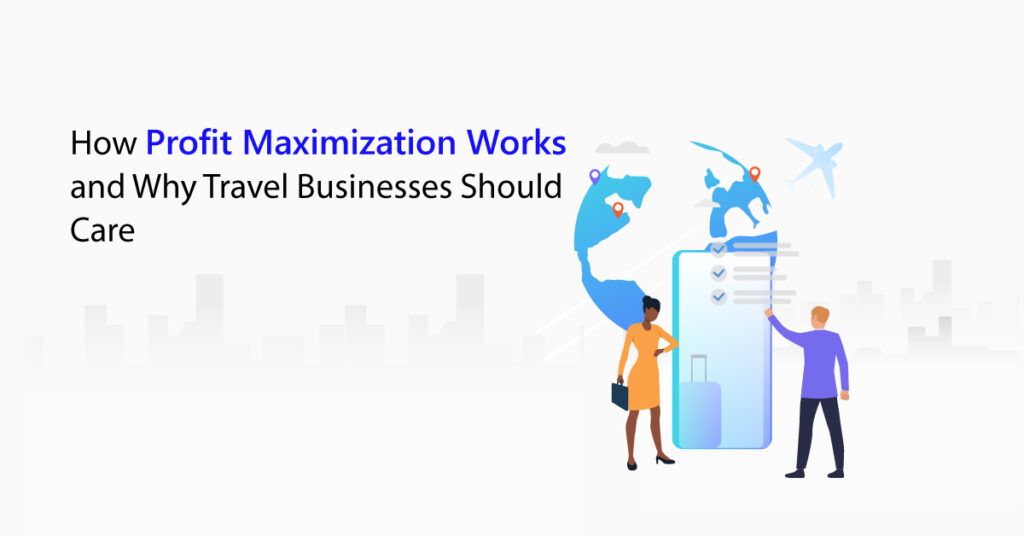
Hotel prices don’t stand still – and neither should your profit optimization strategy. In a market where hotel prices constantly fluctuate and availability shifts, Profit Maximization helps travel companies boost their margins while enhancing the customer experience. But how exactly does it work? Let’s unpack the process, the perks, and why this strategy is becoming essential for travel companies looking to stay ahead. Understanding Profit Maximization in Travel In hotel distribution, especially when dealing with suppliers or wholesalers, Profit Maximization refers to the scenario where an OTA (Online Travel Agency) or OTB (Online Travel Business) has already booked a hotel room for a customer but continues checking availability, prices, or terms from various suppliers or wholesalers. In case the same room booked by the customer becomes available at a lower rate by another supplier, the OTA withdraws the initial booking and rebooks the hotel room to maximize their profit margin. This process of hotel rebooking is also referred to as price optimization, booking optimization, hotel rebooking, etc. In the next section, let’s understand how it works. Check out this video explaining how it works: https://www.youtube.com/watch?v=4pGlxF0ovz8 How Does Profit Maximization Work? To understand how the concept of profit maximization works in the travel industry, let’s consider two scenarios: Scenario 1: When You’re a B2B Hotel Booking Platform In the case of B2B travel platforms, you connect OTAs, travel agents, tour operators, etc. To multiple hotel suppliers/wholesalers. In this case, Profit Maximization works in the following steps: Step 1: Initial Booking A travel agent books a hotel room for his customer on the rates of suppler A, via your platform and you confirm the booking. Step 2: Continuous Price Monitoring Even after making the initial booking, you keep looking out for price fluctuations/price drops from other integrated suppliers. Step 3: Identifying Better Hotel Prices You see that supplier B is offering a better & lower hotel price for the hotel room you booked from supplier A. Step 4: Implementing Profit Maximization The Profit Maximization tool cancels the initial booking with suppler A and rebooks the hotel room at the prices of suppler B. Final Outcome: Your travel agent gets the same hotel room at a better cost, potentially increasing their own margin or allowing them to offer more competitive pricing to their end customers. Scenario 2: When You’re a B2C Hotel Booking Platform You’re an online hotel booking platform that directly sells hotel rooms to individual travelers through your hotel booking platform. In this scenario, the Profit Maximization process involves the following steps: Step 1: Customer books a hotel room A customer books a hotel room through your hotel booking platform at the rate of Supplier X. Step 2: Dynamic Price Monitoring Your platform keeps monitoring the prices & availability of the same hotel room with other integrated suppliers. Step 3: Better Deal Identified Later, Supplier Y offers the same or comparable room type at a cheaper price or with improved benefits (e.g., better cancellation policy, free upgrades). Step 4: Automatic or Manual Profit Maximization Your platform automatically cancels the existing booking (assuming cancellation terms allow) and rebooks the reservation with Supplier Y at the better price or conditions. Alternatively, you can alert the customer, highlighting the improved price or conditions and encouraging them to confirm the Profit Maximization. Outcome & Customer Communication: Travelers enjoy the exact same hotel room but at lower cost or better terms. Your platform may pass savings directly to customers (competitive advantage) or retain savings as additional margin (profitability). Why Should Travel Businesses Care About Profit Maximization? When profit isn’t just a number; it’s maximizing earnings to ensure sustainability. Profit maximization provides the resources for strategic investments and development. Ultimately, higher profits empower OTAs to deliver even greater value. With continuous monitoring of hotel prices across different suppliers, platforms can detect and capitalize on lower prices or improved conditions. Rebooking allows travel agencies and OTAs to procure rooms at reduced costs, increasing their overall profitability. Similarly, B2C platforms benefit directly by securing lower purchase prices, enhancing the margin between their selling price and procurement cost. This consistent margin improvement significantly impacts overall business profitability. Platforms that proactively rebook hotel inventory at the best available prices maintain a strong competitive advantage in the marketplace. Here’s why- customers deeply value price savings, transparency, and improved booking conditions. In the B2B travel market, agencies and travel operators are more likely to remain loyal if the platform consistently helps them maximize their margins or enhance their competitive edge. While in the B2C travel market, end customers greatly appreciate receiving automatic or suggested price reductions post-booking, reinforcing positive experiences that encourage repeat bookings, build brand loyalty, and enhance customer lifetime value. Another aspect that greatly emphasizes the use of rebooking is ‘automation’ that reduces the manual effort typically required to monitor prices, cancel bookings, and initiate new reservations. Both B2B and B2C platforms can lower operational costs, allocate resources more efficiently, and allow their teams to focus on higher-value strategic tasks, sales, and customer service. Hotel prices fluctuate frequently due to seasonal changes, hotel occupancy levels, supplier competition, and market conditions. Travel businesses that continuously engage in rebooking practices have the capability to dynamically optimize their hotel procurement prices. This flexibility ensures that platforms consistently capture the best possible deals available in real-time, translating into tangible savings for their customers and enhancing overall business performance. A platform known for reliably optimizing hotel bookings builds substantial trust and credibility. Delivering consistent value to professional travel partners (OTAs, travel agents, and corporate buyers) reinforces their reputation as dependable, cost-effective distribution channels. Offering consistently optimized bookings sets them apart from competitors who lack the technology or infrastructure to deliver comparable savings or benefits. This advantage applies equally to B2B platforms that aggregate demand from multiple business customers, and to B2C platforms that deliver substantial direct consumer bookings, further improving their overall cost efficiency. Coming to another aspect- ‘Revenue Management Flexibility’, the savings or improved conditions achieved through rebooking strategies give platforms substantial flexibility in their
Choosing the Right Hotel Booking API: A Step-by-Step Guide
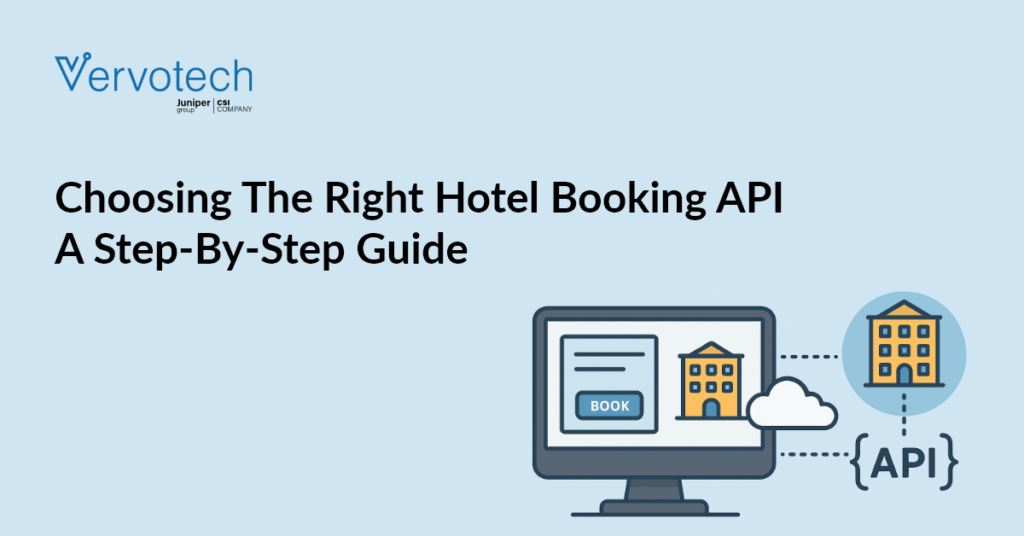
Overview: Hotel Booking APIs are the backbone of a successful hotel booking platform. However, not all APIs are created equal. From inventory diversity to integration flexibility, choosing the right API can make or break your business. A bad choice of Hotel Booking API can hold you back from expanding your booking platform’s potential. In this resource, we discuss a step-by-step process to help you select a Hotel Booking API that is the right choice for your business. Download the Infographic here: (no email required) Download Now
Gauging The Lost Revenue Opportunity: How Rebooking Helps Increase Online Travel Business’ Profit Margins
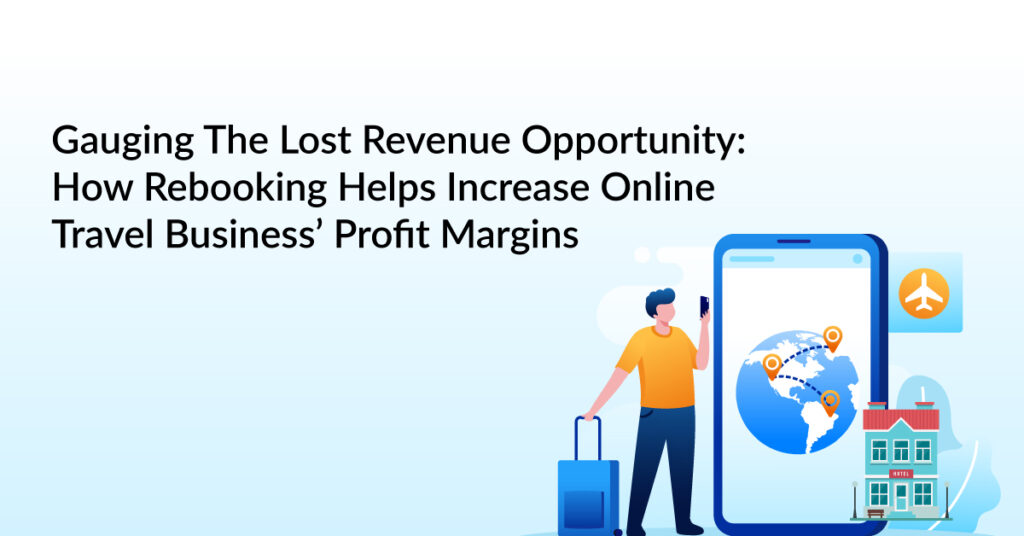
The travel landscape is becoming increasingly competitive. While the competition is increasing, online travel booking businesses are under pressure to maximize profit margins. With constant fluctuations in hotel rates, often daily & mostly hourly, many of the travel businesses miss out on the hidden opportunity to capitalize on the revenue gap created by hotel price fluctuations. This revenue gap is exactly what ‘rebooking’ fills. With the right profit optimization strategy, travel businesses can ensure capturing price fluctuations and increase net profit on every rebooked hotel room. In this article, we’ll explore how online travel businesses lose revenue without automated rebooking, how ‘rebooking’ helps increase net profit, reasons why rebooking is a great strategy, and how online travel businesses can rebook easily. Let’s begin by understanding how businesses lose revenue in case of hotel price drops? How do hotel price drops impact OTA revenue? Hotel prices drop & rise all the time. Reasons? Could be many! Off-season, major events, bad reputation, low footfall, booking cancellations, etc. For example, during the 2022 World Cup in Qatar, hotel prices surged by 40% as global demand flooded in. In most cases, travel companies lock in a price at booking and never look back. However, studies show that hotel rates drop after booking in at least 15-25% of cases. Hotel price fluctuations are a double-edged sword for OTAs. When hotels lower their rates, it often means OTAs earn lower commissions, as their earnings are typically a percentage of the total booking cost. Let’s understand this with the following video: https://www.youtube.com/watch?v=4pGlxF0ovz8 Additionally, many travelers now use price-tracking tools and rebooking services, canceling their original reservations to take advantage of new, lower rates. This results in lost revenues, which must either absorb the losses or find ways to optimize pricing strategies. For instance, if an OTA has a 15% commission model and the price of a hotel room drops from $200 to $180, the commission falls from $30 to $27 per booking. While this seems like a minor difference, when scaled across thousands of bookings, it leads to substantial revenue erosion. The next section throws light on the substantial revenue loss that occurs during hotel price drops. How Much Revenue Is Lost Without Rebooking? Without an automated rebooking strategy, travel businesses and OTAs miss out on a significant revenue stream. Studies show that hotel prices fluctuate multiple times before check-in, with price drops occurring in as many as 40% of cases. If online travel businesses do not capitalize on these fluctuations, they lose the opportunity to increase their margins. For instance, an OTA with an annual booking volume of $50 million could improve profitability by 2-5% by leveraging rebooking technology. That’s an additional $1-2.5 million in potential profit left untapped. Without rebooking, this revenue is lost to price-sensitive travelers who actively search for better deals elsewhere. Also Read: A quick guide to profit maximization for online travel business How Rebooking Impacts Net Profit of Your Travel Business What if you could automatically secure a lower hotel booking price from another supplier even after a booking is confirmed? Rebooking isn’t just about cutting costs- it directly impacts the net profit of a travel business. Rebooking or profit maximization technology automatically secures better rates on existing bookings that helps OTAs increase their profit margins without additional marketing expenses. Since rebooking occurs on confirmed bookings, there’s no risk of customer churn but an opportunity to improve profitability. Here’s a flow chart of how it works: Let’s understand this with a scenario- A travel agency processes 100,000 bookings a year and saves an average of $15 per booking through profit maximization tech, that translates to $1.5 million in extra profit annually. These savings add up, helping OTAs and travel businesses build a more sustainable and competitive revenue model. Low Risk, High Reward: The Benefits of Rebooking Rebooking is a rare profit maximization business strategy that offers substantial rewards with minimal risk. Some of the key benefits of implementing a profit maximization strategy can be summed up as: 1. Higher Margins- Rebooking ensures OTAs secure the best rates without lowering their commission percentage. 2. No Additional Customer Acquisition Costs- Instead of spending money on marketing to attract new customers, businesses can increase profitability from existing bookings. 3. Improved Customer Loyalty- Travelers who experience price adjustments in their favor are more likely to book through the same OTA again. 4. Competitive Advantage- Offering automatic rebooking as a feature differentiates a travel business from competitors that do not provide this service. While those are the benefits, you must be wondering how to implement a robust rebooking strategy and maximize profits. We talk about it in the following section. Take Away- Act Smart & Capture Higher Revenue In an industry where profit margins are often tight, rebooking offers a practical and effective way to boost profitability without the risk. To make the most of hotel price drops, online travel businesses can adopt Profit Maximization Tools that use data analytics to monitor price fluctuations in real-time, raise an alert when the prices drop, and give you an option to rebook rooms from your preferred supplier, when a lower price becomes available. With hotel price fluctuations happening frequently, failing to capitalize on price drops results in significant revenue losses. Travel businesses that adopt automated rebooking will be better positioned to thrive in an increasingly competitive market.




